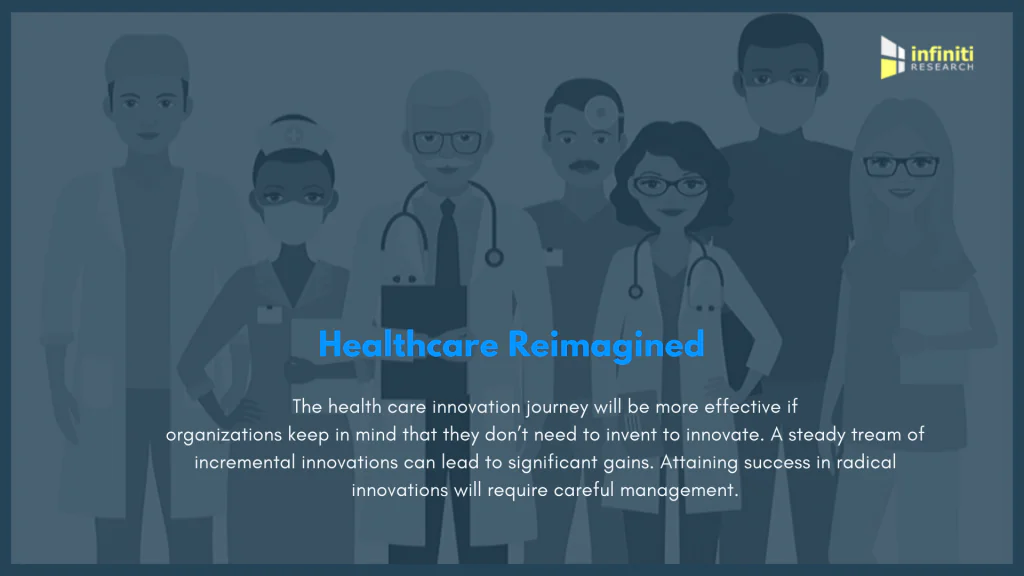With the increased need for accountability, health care quality, and patient-centered care, organizations in the sector are increasingly chasing innovation. Health care innovation is crucial to solving some critical challenges in patient care as well as operational efficiency. However, a recent survey by healthcare industry experts states that less than 30% of healthcare providers across the globe are mature in their ability to access, integrate, and analyze healthcare data from diverse sources.
Those still resorting to conventional methods of healthcare are in the threat of being left behind amidst transformations in the healthcare sector. Most of them see health care innovation as highly challenging to implement and often are unsure as to where they should begin. This article describes some key processes that can help organizations demystify the process of health care innovation and ensure a smooth transition.
Transforming health care delivery into a system that is more value-based and patient-centric will require a commitment to change, whether it’s a radical innovation, incremental innovation. Request a free proposal for insights on how your organization can prepare for health care innovation in the long run.

Invention and innovation are not the same
Many organizations often make the mistake of defining innovation as the use of novel technologies, processes, or even business models. However, any new technology, at least in the early stages, can only be regarded as an invention. Although inventions are vital, only when these inventions rise to widespread adoption to transform the behavior and functioning of users or organizations can they be termed as innovations? If an invention is not successful in scaling progress at different levels in the organization, it does not become an innovation.
Innovations do not always require radical change
The size of innovation can vary from organization to organization. They can be either radical or even incremental. Health care innovation can be in the form of adopting a new approach to an existing service such as a material improvement on minimally invasive techniques or it can even mean offering a new service that redefines organizations’ existing processes. Continuous incremental healthcare innovation can help organizations learn whether the changes are favorable to their organization or not and adjust their course accordingly.
Radical innovation requires choreography
Several organizations dread radical health care innovation as they believe that this could turn the entire operations of their organization upside down and could cause inconvenience to some degree. This attitude can sometimes have catastrophic outcomes for healthcare companies. Choreographing radical innovation requires healthcare companies to be honest with themselves about their change management prowess. It also necessitates them to take steps to improve it if necessary. They must put into play a mechanism to assess and incorporate all the complementary strategies.
Learn more about our custom portfolio of services for healthcare organizations.


